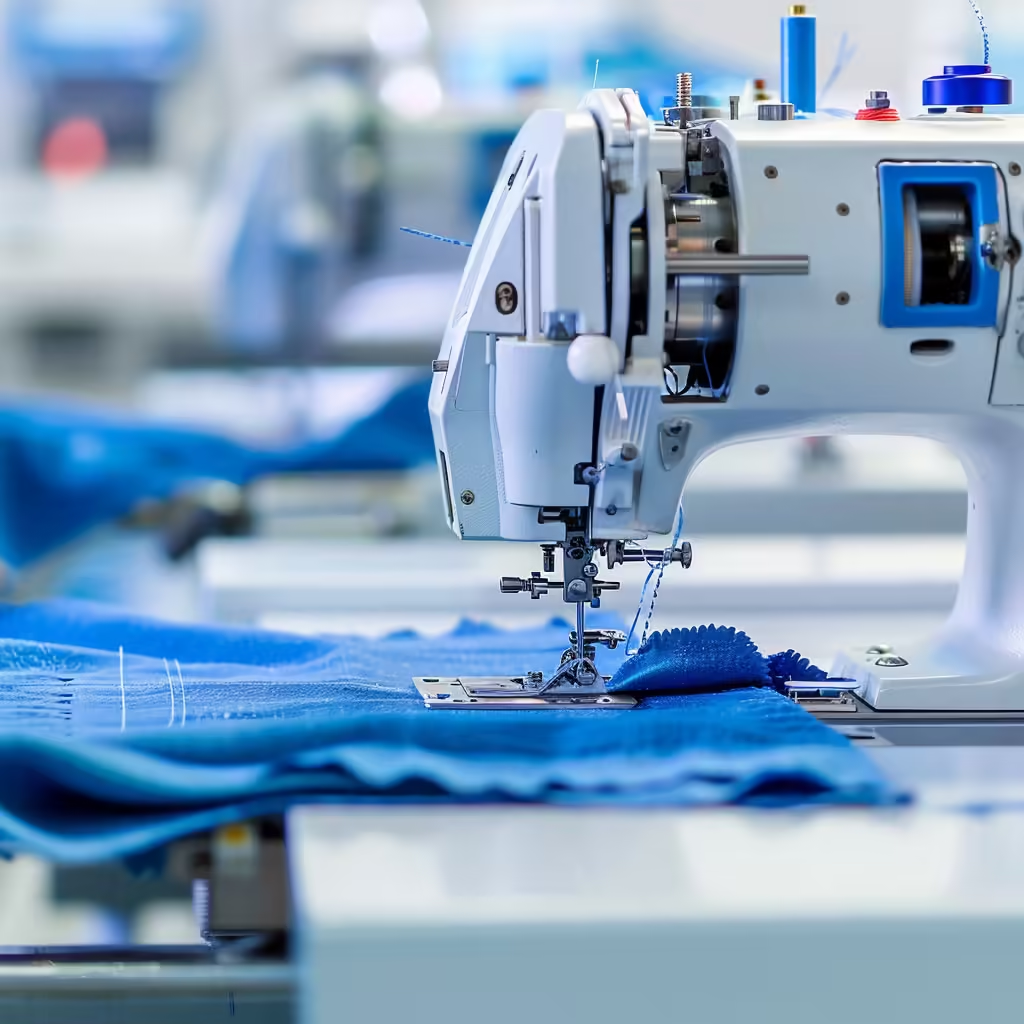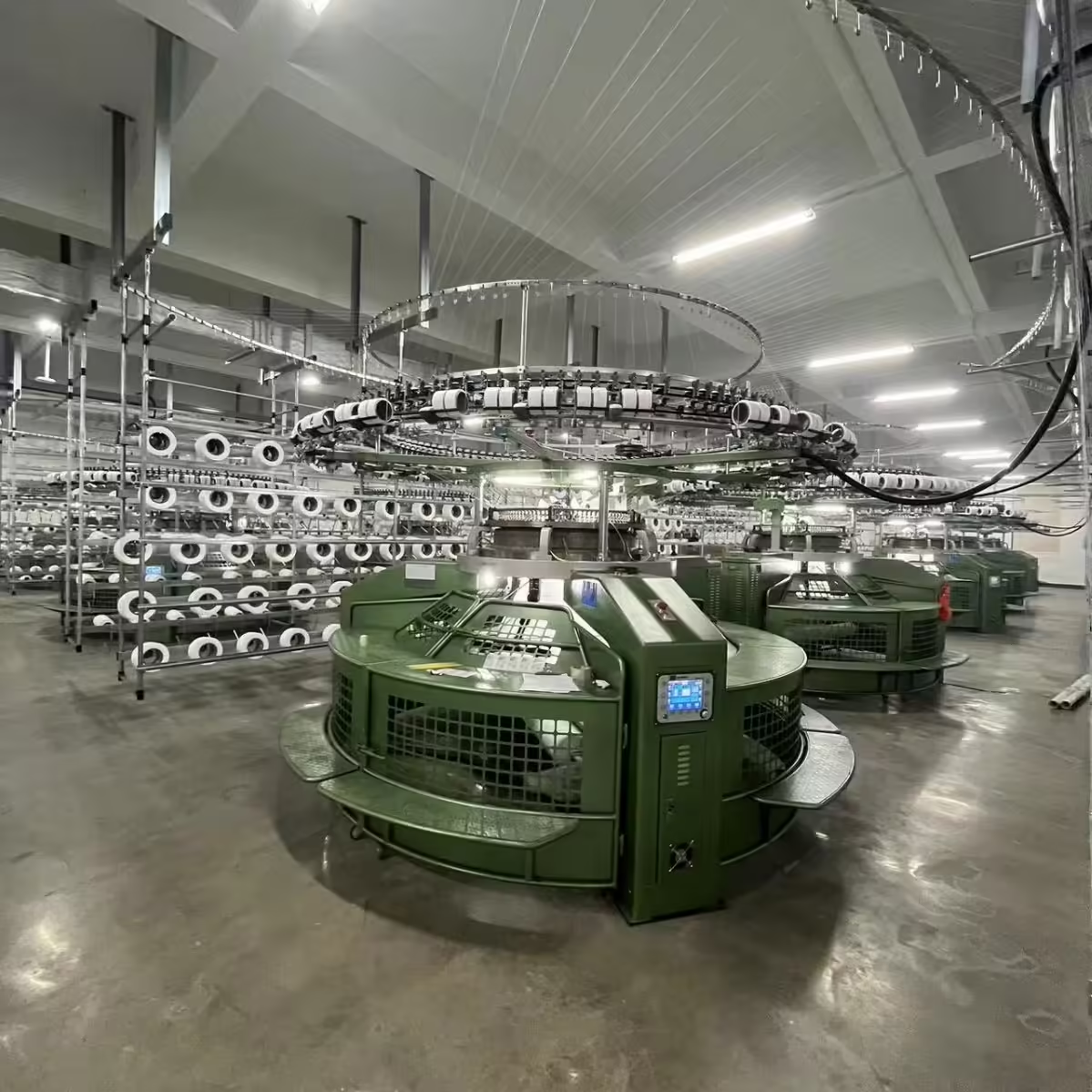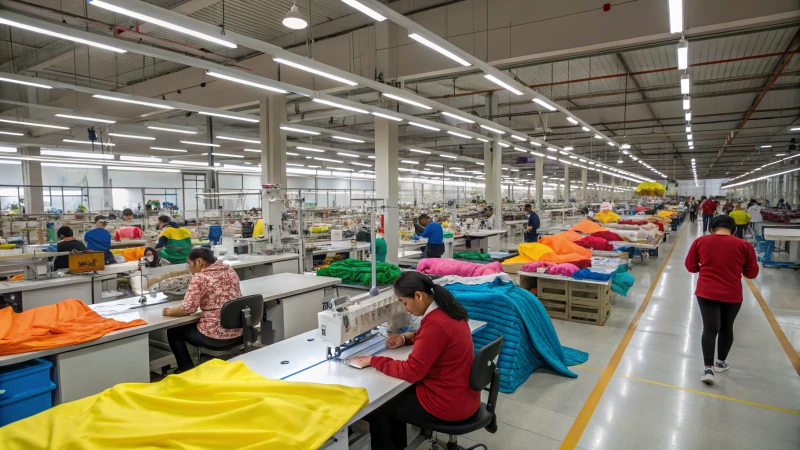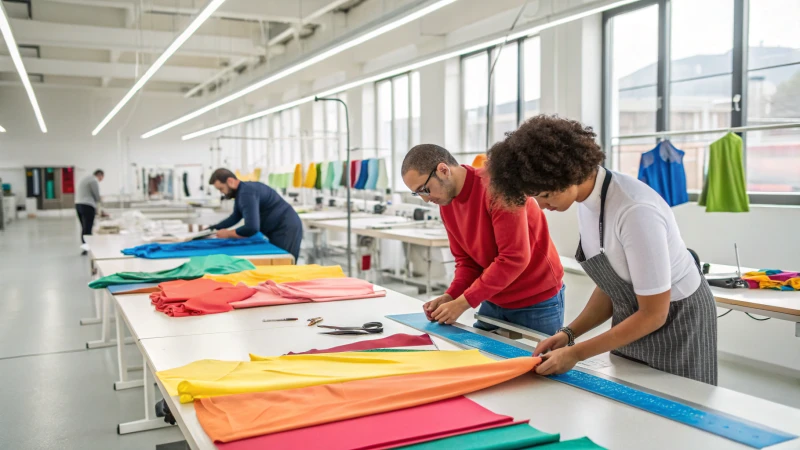
Underwear is a staple in wardrobes worldwide, but which country excels in manufacturing the best?
China is the leading country in underwear manufacturing due to its vast production capacity and established supply chains. However, Vietnam is emerging as a strong competitor with its cost-effective solutions and skilled labor force.
While knowing that China and Vietnam are key players is insightful, delving deeper into what makes them stand out will help businesses and consumers make informed decisions. Let's explore the factors that contribute to their success and how they compare.
China leads in underwear production due to its vast capacity.True
China's large-scale production and efficient supply chains dominate the market.
What Makes China's Underwear Manufacturing Stand Out?
China dominates the underwear market, but what sets its production apart from others?
China stands out in underwear manufacturing due to its advanced technology, efficient supply chains, and diverse production capabilities. It excels in producing a wide range of styles at competitive prices, making it the go-to choice for many international brands seeking large-scale production with consistent quality.

Advanced Technology and Infrastructure
China's infrastructure is unmatched in terms of scale and sophistication, enabling seamless integration of advanced manufacturing technologies. This includes automated sewing machines and cutting-edge fabric processing techniques1 that enhance efficiency and quality.
Extensive Supply Chains
A well-established network of suppliers provides everything from raw materials to packaging solutions. This network ensures reduced lead times and cost savings, allowing manufacturers to respond swiftly to market demands.
| Component | Description |
|---|---|
| Raw Materials | Diverse sources for cotton, synthetic fibers, etc. |
| Logistics | Efficient transport systems ensure timely delivery |
| Skilled Workforce | Training programs produce highly skilled labor |
Diverse Production Capabilities
China's ability to manufacture a wide array of underwear styles—from basic essentials to luxury lingerie—is a major advantage. This diversity allows brands to offer extensive product ranges without switching manufacturers.
Competitive Pricing Strategies
Leveraging economies of scale, Chinese manufacturers can offer competitive pricing while maintaining high standards of quality. This balance is particularly appealing to international brands looking to maximize profit margins.
Adaptability and Innovation
Continuous investment in research and development helps Chinese manufacturers stay ahead in fashion trends and consumer preferences. Innovations in sustainable practices and materials are also being incorporated, reflecting global shifts toward eco-friendliness.
While China has a formidable presence in the underwear industry2, it's essential to consider other factors like labor costs and emerging competitors such as Vietnam when making manufacturing decisions.
China uses automated sewing machines in underwear production.True
China's manufacturing leverages automation to enhance efficiency and quality.
Vietnam surpasses China in underwear manufacturing scale.False
China still leads in scale, though Vietnam is an emerging competitor.
How is Vietnam Gaining Ground in the Underwear Industry?
Vietnam is emerging as a formidable player in the underwear industry, challenging traditional giants.
Vietnam is gaining ground in the underwear industry through cost-effective production, skilled labor, and strategic trade agreements, positioning itself as a competitive alternative to established markets like China.

Cost-Effective Production
One of the key reasons Vietnam is gaining traction in the underwear industry is its cost-effective production solutions3. Labor costs in Vietnam are significantly lower compared to countries like China, making it an attractive destination for brands looking to maintain high-quality standards while minimizing expenses.
Skilled Labor Force
Vietnam's workforce is known for its skill and craftsmanship. With a growing number of vocational training programs4 focused on textile and garment production, the country has been able to supply a steady stream of skilled workers. This capability is critical for producing intricate designs that meet global quality standards.
Strategic Trade Agreements
Vietnam's increasing presence in the global underwear market is further bolstered by its participation in strategic trade agreements, such as the Comprehensive and Progressive Agreement for Trans-Pacific Partnership (CPTPP)5 and the EU-Vietnam Free Trade Agreement (EVFTA). These agreements reduce tariffs and enhance market access, making Vietnamese products more competitive on the global stage.
Growing Export Presence
Vietnam's export presence has been steadily growing, with a significant increase in shipments to markets such as the United States and the European Union. This growth is driven by a combination of favorable trade conditions6 and the country's ability to quickly adapt to changing market demands.
Supply Chain Resilience
Vietnam has also made strides in developing a resilient supply chain. The government has invested in infrastructure improvements, such as ports and roads, to facilitate easier and faster transportation of goods. This enhanced logistics capability positions Vietnam as a reliable partner in the global underwear supply chain.
Vietnam's labor costs are higher than China's in underwear production.False
Vietnam's labor costs are lower, making it cost-effective.
Vietnam benefits from CPTPP and EVFTA in the underwear industry.True
These agreements reduce tariffs and enhance market access.
Which Factors Should Businesses Consider When Choosing a Manufacturer?
Choosing the right manufacturer is crucial for business success. What factors should you consider?
When selecting a manufacturer, businesses should consider production capacity, cost-effectiveness, quality standards, and the manufacturer's location. Understanding these factors helps in making informed decisions tailored to specific business needs.

Production Capacity and Scalability
One of the primary considerations for businesses is a manufacturer's ability to meet production demands. Assessing whether a manufacturer can scale operations to accommodate growth is essential. For instance, China's manufacturing industry7 is renowned for its ability to handle large-scale production efficiently.
| Factor | Description |
|---|---|
| High Volume Capability | Ability to produce large quantities quickly |
| Flexibility | Adapting to changing order sizes and needs |
Cost-Effectiveness
Budget constraints often dictate manufacturing choices. Analyzing cost structures, including labor, materials, and transportation, is crucial. Vietnam, for example, offers competitive pricing due to lower labor costs and efficient supply chains.
- Labor Costs: Compare labor costs between potential countries.
- Material Availability: Evaluate access to raw materials that can influence pricing.
Quality Standards and Certifications
High-quality production is non-negotiable for most businesses. Ensuring that manufacturers meet industry standards and possess necessary certifications guarantees product reliability. Researching quality control processes8 can provide insights into a manufacturer's commitment to excellence.
Location and Logistics
The geographical location of a manufacturer impacts shipping times, costs, and supply chain efficiency. Proximity to major markets or ports can significantly reduce logistical expenses and time-to-market. Analyzing logistics networks9 can reveal strategic advantages in choosing certain locations.
Technological Capabilities
Incorporating advanced manufacturing technologies can lead to higher efficiency and innovation. Evaluating a manufacturer's technological infrastructure helps determine their ability to implement cutting-edge techniques that enhance product quality and reduce lead times.
In conclusion, considering these multifaceted factors equips businesses with the knowledge to select manufacturers that align with their strategic goals and operational requirements.
China excels in large-scale manufacturing.True
China's industry is known for efficiently handling high-volume production.
Vietnam has higher labor costs than China.False
Vietnam is noted for lower labor costs, making it cost-effective.
What Are the Emerging Trends in Global Underwear Production?
Discover the latest trends transforming global underwear production and shaping the future of this essential industry.
Emerging trends in global underwear production include sustainability, technological integration, and customized manufacturing. These trends are driven by consumer demand for eco-friendly options, efficiency, and personalized products.

Embracing Sustainability in Underwear Production
Sustainability is no longer just a buzzword; it has become a cornerstone of modern manufacturing practices. Underwear producers are increasingly adopting eco-friendly materials such as organic cotton, bamboo, and recycled fibers. Brands are also implementing water-saving dyeing processes and reducing waste through innovative design techniques. This shift caters to environmentally conscious consumers and helps reduce the industry's ecological footprint. For instance, some companies are opting for biodegradable packaging to further enhance their sustainable image.
Technological Integration: A Game Changer
The integration of technology into manufacturing processes is revolutionizing the underwear industry. Advanced robotics, AI-driven supply chain management, and digital printing are some of the key technological advancements being utilized. These technologies improve precision and efficiency, reducing production time and costs. Furthermore, digital platforms are enabling companies to offer virtual fitting rooms, allowing customers to find the perfect fit from the comfort of their homes.
Rise of Customized and Personalized Products
Customization is increasingly in demand as consumers seek products that reflect their individuality. Manufacturers are responding by offering personalized underwear options, allowing customers to choose colors, patterns, and even add monograms or initials. This trend is made possible by flexible production techniques and digital design tools. Customization not only enhances customer satisfaction but also promotes brand loyalty by providing unique product offerings.
The Impact of Global Supply Chain Dynamics
The global supply chain dynamics are shifting as manufacturers diversify their sources to mitigate risks such as geopolitical tensions and supply chain disruptions. Countries like India and Bangladesh are emerging as alternative hubs for underwear production due to their competitive labor costs and expanding infrastructure. Additionally, the COVID-19 pandemic has accelerated the adoption of reshoring strategies in some regions, prompting companies to bring production closer to home.
Future Outlook: Navigating Challenges and Opportunities
While the underwear industry faces challenges such as fluctuating raw material costs and stringent regulations, it also presents opportunities for growth through innovation and market expansion. Companies investing in research and development can stay ahead by creating cutting-edge materials and designs. Moreover, tapping into emerging markets with growing middle-class populations can drive demand for quality underwear products.
In conclusion, the global underwear production landscape is rapidly evolving with sustainability, technology, customization, and supply chain dynamics at the forefront. Staying informed about these trends can help businesses adapt and thrive in this competitive market.
Sustainable materials dominate underwear production.True
Eco-friendly materials like organic cotton and bamboo are widely used.
Technology has no impact on underwear manufacturing.False
Advanced robotics and AI are revolutionizing production efficiency.
Conclusion
Choosing the best country for underwear manufacturing depends on your specific needs—whether it's scale, craftsmanship, or cost-efficiency. Both China and Vietnam offer unique advantages, making them top contenders in the industry.
Learn about how cutting-edge technology enhances efficiency in China's textile industry.: China is now better known for its advanced technology of textile manufacturing. Check out the basic know-how of its outsource manufacturing! ↩
Explore why China is a leader in the global underwear market.: China's global dominance in underwear production stems from a small town's expertise, where skilled artisans and modern factories craft a vast ... ↩
Explore how Vietnam offers cost-effective production for underwear brands.: TAG Vietnam Co., Ltd.: TAG Vietnam is known for producing high-quality underwear and lingerie for various international brands. Calvin Klein: ... ↩
Learn about Vietnam's vocational programs boosting garment industry skills.: Providing training courses of sectors such as: Sailors, ship mechanics, mechanical workers, welding, electronics, textile and garment, wood processing ... ↩
Discover how CPTPP enhances Vietnam's competitive edge in exports.: It is free trade agreements like the CPTPP that will help Vietnam on its way to becoming an industrialised country by 2045. These agreements ... ↩
Understand Vietnam's strategies for expanding exports to major markets.: Vietnam's trade surplus with the EU stood at an estimated US$11.4 billion in this period, an increase of 16.7 percent year-on-year. ↩
Discover how China's manufacturing handles large-scale production efficiently.: China is now the world's sole manufacturing superpower. Its production exceeds that of the nine next largest manufacturers combined. ↩
Learn about quality control processes that ensure product reliability.: Quality control is a process that uses best practices, strict adherence to standards, and specifications to deliver products without defects. ↩
Explore logistics networks that offer strategic location advantages.: Top 10 logistics associations include CSCMP, American Trucking Associations, CILT, LSCMS, Logistics UK, FIATA, Reverse Logistics & ELA. ↩






